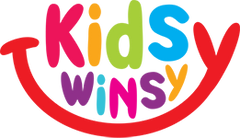
The Importance of Handcrafts for Brain Development
The Importance of Handcrafts for Brain Development
Engaging in handcrafts plays a crucial role in children's cognitive development, making DIY kits for kids an invaluable tool for fostering essential skills. Creating something with their hands stimulates various brain areas, promoting cognitive functions such as problem-solving, spatial awareness, and fine motor skills. DIY kits offer a hands-on approach, allowing kids to explore their creativity, enhance concentration, and develop patience as they navigate the process of crafting. Moreover, these activities provide an opportunity for sensory exploration, contributing to the development of sensory processing skills.
The importance of handcrafts for brain development extends beyond the tangible finished product. Children involved in DIY projects learn to follow instructions, boosting their comprehension and sequencing abilities. Moreover, the sense of accomplishment gained from completing a handmade creation boosts self-esteem and confidence. DIY kits for kids cover various activities, from painting and sculpting to building and crafting, offering diverse experiences that cater to different learning styles. Incorporating handcrafts into a child's routine through DIY kits nurtures their artistic expression. It lays a strong foundation for holistic brain development, encompassing cognitive, emotional, and social aspects.
Why Are Handcrafts Crucial For Brain Development in Children?
Engaging in handicrafts is essential for the holistic brain development of children, and the availability of a craft shop online has made these activities even more accessible. Crafting involves a combination of sensory experiences, fine motor skills, and cognitive processes that stimulate various brain regions. When children participate in hands-on crafting, they refine their motor coordination, spatial awareness, and problem-solving skills. The tactile nature of crafting also fosters sensory exploration, contributing to the development of sensory processing abilities. Moreover, the creativity involved in choosing materials, colors, and shapes enhances cognitive flexibility and imaginative thinking.
Craft shop online platforms allow parents and educators to access crafting materials and DIY kits, facilitating various creative activities. These online resources empower children to explore different artistic mediums, fostering self-expression and confidence. Through creating something with their hands, children enhance their cognitive abilities and develop essential life skills, such as patience, perseverance, and the ability to follow instructions. Overall, handcrafts supported by craft shop online options play a pivotal role in shaping children's well-rounded cognitive, emotional, and motor skills.
How do Handcrafts Enhance Fine Motor Skills And Coordination?
Engaging in handcrafts is a powerful means to enhance fine motor skills and coordination in individuals of all ages. When individuals partake in activities like knitting, beading, or woodworking, they refine their hand-eye coordination by manipulating various materials. The intricate movements required in crafting contribute to developing precise motor skills as individuals learn to control and coordinate their hand movements with greater accuracy. This improvement in fine motor skills is particularly crucial for children in their formative years as it lays the foundation for writing, typing, and other daily tasks.
Crafting also demands heightened concentration and attention to detail, encouraging individuals to focus on specific movements and gestures. This sustained attention further strengthens fine motor skills and coordination. Best-selling handmade items often involve intricate craftsmanship, showcasing the refined abilities of individuals who have honed their fine motor skills through consistent handcrafting engagement. Whether it's knitting needles, paintbrushes, or carving tools, various crafting instruments foster skill and control, demonstrating the direct correlation between handcrafts and fine motor skills and coordination enhancement.
How do Handicrafts Promote Creativity And Problem-Solving Skills?
Handcrafts serve as a dynamic platform for promoting creativity and problem-solving skills in individuals of all ages. Individuals are encouraged to explore their imagination, experiment with different materials, and devise innovative solutions to design challenges when crafting. Whether selecting colors, shapes, or textures, crafting fosters creative thinking by offering a space for individuals to make choices and express their unique ideas through their creations.
Furthermore, handcrafts inherently involve problem-solving as individuals navigate through the various stages of a project. They must decipher instructions, troubleshoot unexpected issues, and adapt their approach. Overcoming these challenges contributes to the development of critical problem-solving skills. Whether figuring out how to mend a torn seam or conceptualizing a new design, each crafting endeavor presents an opportunity to hone problem-solving abilities. Ultimately, handcrafts provide a multifaceted arena where creativity flourishes, and problem-solving becomes an integral part of the artistic process, contributing to individuals' overall cognitive development and innovative thinking.
Frequently Asked Questions
Q1 What are the benefits of using activity kits?
A. Activity kits offer numerous benefits, including fostering creativity, providing hands-on learning experiences, promoting problem-solving skills, and offering a convenient and all-inclusive way to engage in various activities.
Q2. Can Indian festival crafts be used for home decor?
A. Absolutely! Many Indian festival crafts, with their vibrant colors and intricate designs, make excellent additions to home decor. Crafts like wall hangings, torans, and traditional paintings are commonly used for this purpose.




